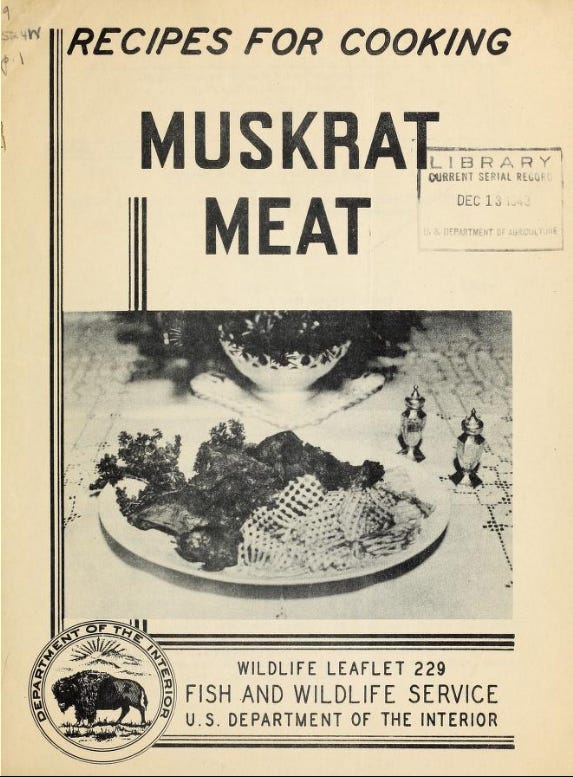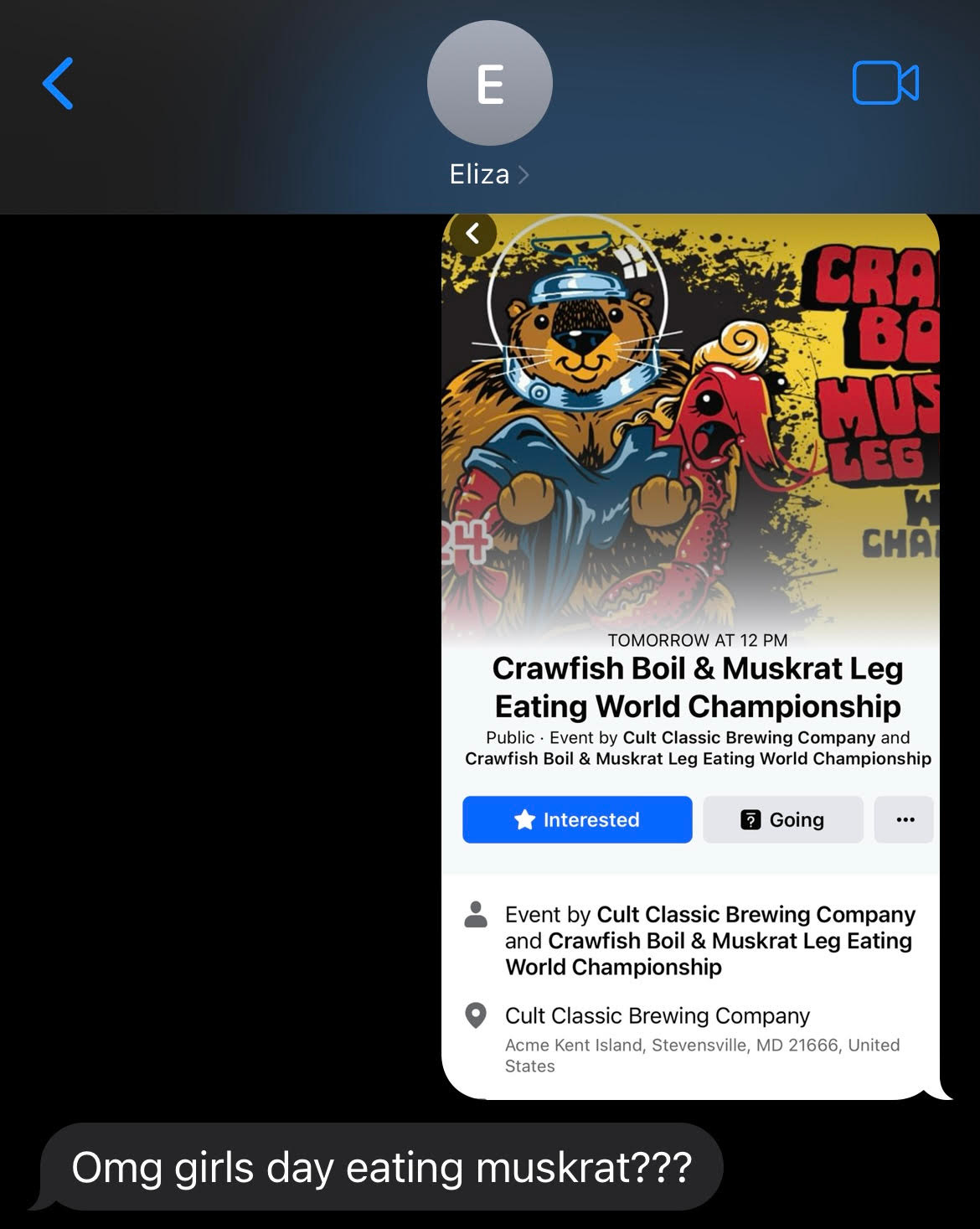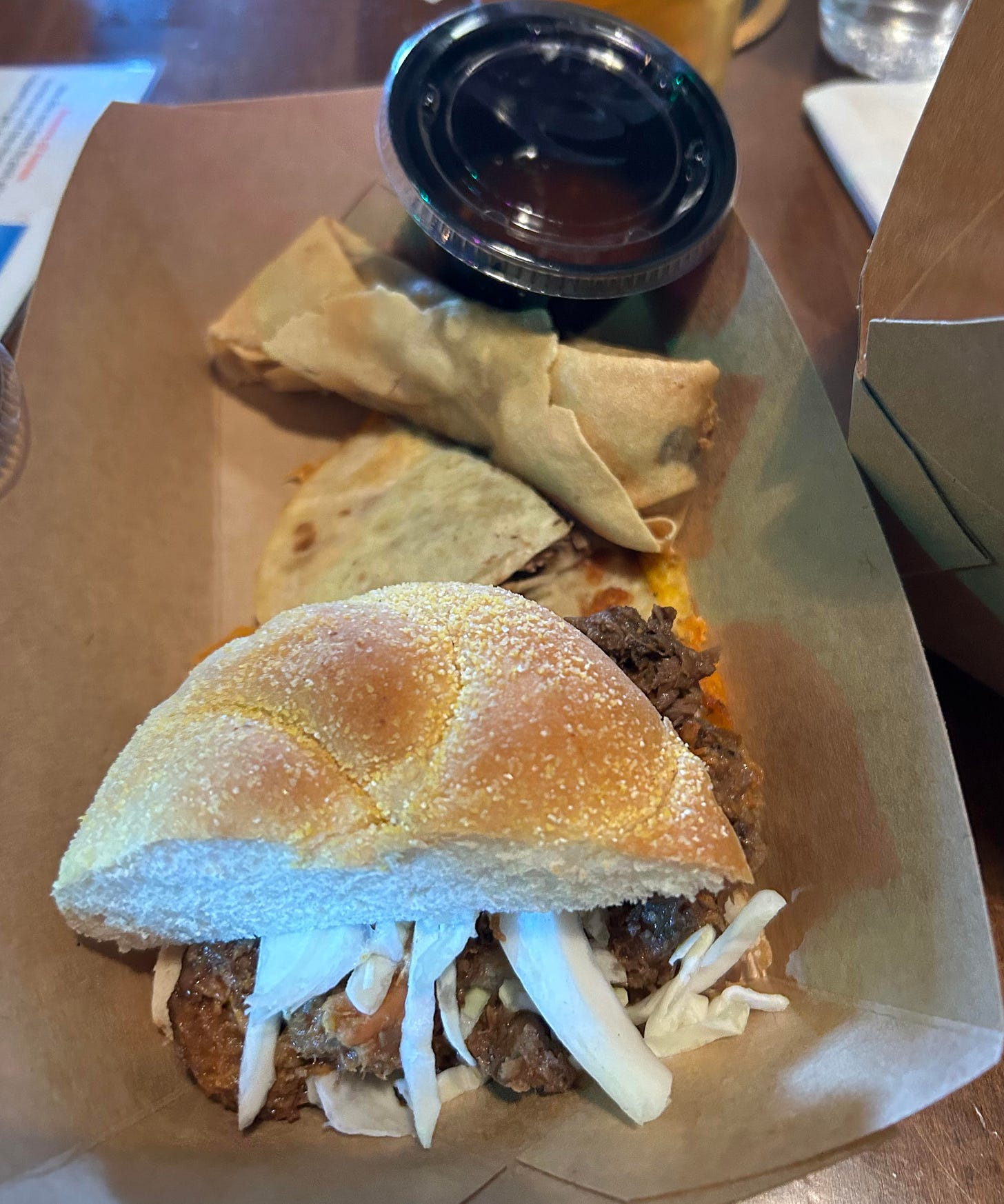My gloomy, February morning started out like any other, but ended up in an unusual and unexpected place: the Muskrat Leg Eating World Championships.
I saw an advertisement for this event—more specifically called the “14th Annual Crawfish Boil and Muskrat Leg Eating World Championships”—somewhere online months earlier and was too intrigued to let it slip my mind. The weekend of the event, I found myself without plans and thought why the hell not.
Not wanting to go alone, I ran through a mental list of which of my friends would not be disgusted by the idea of driving an hour to attend a rodent-eating competition. When my friend Eliza responded, “Omg girls day eating muskrat???” I knew we were in. The next day, we hit the road.
We pulled up to Cult Classic Brewery, where the event was being hosted, and decided to order the muskrat sampler platter which consisted of egg rolls, a quesadilla, and a sandwich resembling pulled pork–all made with locally-trapped muskrat–from the pop-up food truck. This was certainly not a time where I’d describe a meat as tasting like chicken. The muskrat resembled the look of pulled pork, but had a gamier, muddier taste (I know, I’m not exactly selling it). We agreed that the best thing on the plate was the quesadilla, where the meat blended into the melted cheese and tortilla. I see how it would be a good protein to be mixed into stews or Shepherd’s pies.
After mingling with some locals (and getting relentlessly hit on by a one-legged fellow) we decided to move away from our table into the room where the real action was about to happen. An MC announced that “the muskrat boys are ready to go!” and proceeded to introduce the nine contestants who were about to eat as many muskrat legs as they could in the given time. When a man nicknamed “Dirty Legs” overtook the expected winner, “Chunky,” for the championship, there was an uproar of both excitement and outrage from loyal friends and fans. What an experience, to say the least.
I left the event even more curious about muskrat as a food. Why isn’t muskrat a regular meat option on our plates? What made this Maryland community so passionate about muskrat that they’d host an entire festival around it? And why is the idea of eating muskrat such an unthinkable turn-off to so many people?
A muskrat is a semiaquatic rodent that lives in wetlands and subsists primarily off of aquatic vegetation. Ever since the beginning of the European colonization of North America, trapping muskrats—along with fox, beaver, and other species—served as a means of survival for many settlers, who sold their pelts and furs and ate the meat that remained. Centuries later, the fur industry has plummeted steadily since the 1980s, taking the market for trapping along with it.
In Maryland, there were approximately 5,000 trappers in the 1970s; today, only 300-400 remain.
While many argue that the decline in trapping is a positive thing, trappers are often experts on their local ecosystems and work with local governments to provide information and data on animal behavior, diseases, and population growth/decline. As trappers decline, so does this source of valuable wetland knowledge. Trapping is a controversial practice, and it doesn’t take much research online to find people denouncing it as inhumane. From what I’ve gathered, some traps powerfully kill animals instantly (picture an effective mouse trap) while others have the potential for…well, let’s just say a prolonged death.
I’m not here to make the case for whether trapping is humane or inhumane. As a meat-eater, I certainly don’t think the cattle that became the beef in the hot dogs I eat were raised or killed humanely. And therein lies the ethical dilemma that I’m sure many of us struggle with—enjoying meat while wrestling with the knowledge of how it gets to our plates. I can bet you one thing: the muskrats being trapped in the Chesapeake and Delaware Bay wetlands certainly lived better lives than the industrially produced meat that most of us consume.
The communities that have eaten muskrat for centuries remain passionate about it, despite a dwindling market. Muskrat season is short, running from January through March. It’s sometimes referred to as “marsh rabbit” (slightly more palatable than something with “rat” in the name?).
Today, muskrat can primarily be found in home-cooking, where it can be fried, barbecued, stewed, or braised after it’s been soaked in salt water overnight to reduce its musky flavor.

Communities in this region continue to find ways to celebrate their culinary history. The Southern Grille in Ellendale, Maryland—against all odds—continues to sell muskrat on its menu, making it the last remaining restaurant in the state to do so. Dorchester County in Delaware hosts an annual muskrat skinning and eating competition. Lower Alloways Creek, New Jersey, has hosted an annual muskrat dinner for more than 80 years.
The story of muskrat as a food intrigued me because, in some senses, it’s a prime example of what many people are looking for in a meat source today: muskrats contribute to the well-being of their wetland ecosystems, are locally sourced and wild-caught, and support the economic wellbeing of the individual trappers and the communities they live in.
Yet, as a whole, we scrunch our noses at the idea of eating rodents and grapple with the ethics of trapping in a world in which the demand for animal furs no longer exists as it used to. As learning about muskrat has inspired me to do over these past few months, I hope this writing inspires you to think more about how we balance these sometimes-conflicting desires, hopes, and realities when it comes to modern-day meat consumption. Whether or not you seek out your own muskrat-eating adventure is up to you.



